Postcards from Nova Scotia: Part 2
Celtic Fiddlers, Groovy Goats, a 'Mad' Hatter and a Canadian Thanksgiving
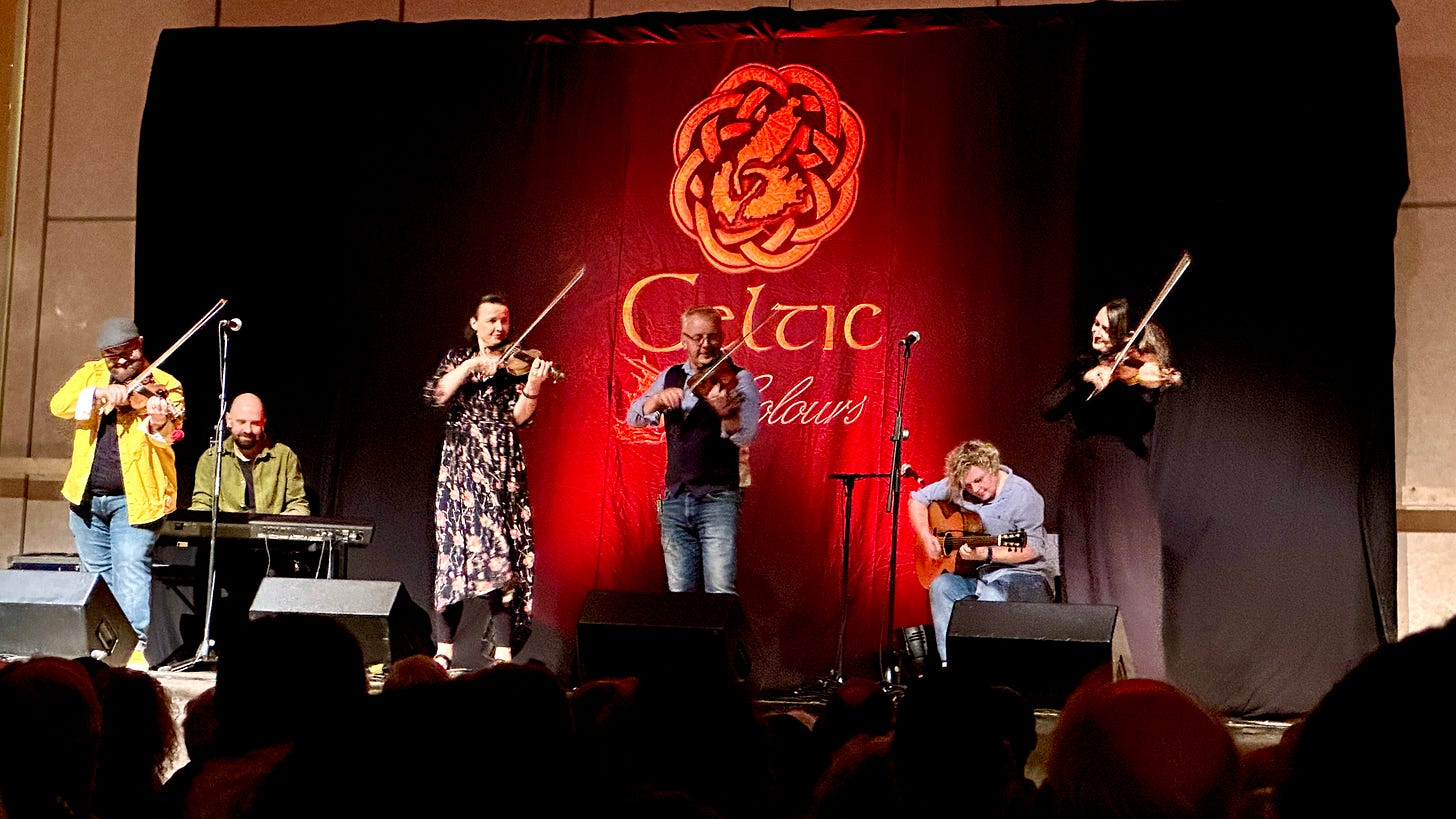
Hello! Thanks so much for being here! If you enjoy these posts, please tell your friends and followers to subscribe to Ruthtalksfood. It would mean a lot to me!
We’re just back from a 3 1/2-week trip that took us from Massachusetts to Maine and Nova Scotia, then back to Maine, New Hampshire, Rhode Island, and, finally, Atlanta. While my husband Jeff, a fellow Substacker, finds it quite easy to post while traveling (you can find his latest newsletter about a Photowalk he took in Atlanta here), I often get too caught up in the rhythm and adrenaline of travel—the tastes, the sights, the people, the opportunity to let my curiosity run amok—to find the quiet time to write. I’ll share a photo montage—and maybe a longer story or two—in the next week or so of some of the highlights of our trip, including serendipitous and delightful meetups with talented Substackers, Amie McGraham of Cook & Tell and the micro mashup, and Crowden Satz of Letters from Satz. You should really check them out. But meanwhile, here are a few more “postcards” from the second part of our trip to Nova Scotia.
In the first part of our journey to Nova Scotia, which you can read about here, we were struck by the bright colors of all that we saw—the houses, the boats, the businesses. When we traveled northeast into Cape Breton Island, it was the music that caught our attention at first, but later the spellbinding scenery still ripening into autumn splendor, the charm and warmth of the people—and their enormous pride in the enchanting (enchanted might be the better word!) island they inhabit.
As I write this, most of commercial Cape Breton is closed for the season—it’s what tends to happen in that part of Canada when the weather starts to cool down in late October and the tourists stay away—but it’s a place you might want to consider for a future trip. The exchange rate (the Canadian dollar was worth about three-quarters of an American dollar when we were there) made it more affordable than coastal New England, with which it has a lot in common: a gorgeous coastline, a fishing heritage, glorious fall foliage (though more muted this year), and hardy folks with a long and colorful history, but there were considerably fewer of them, especially in the areas where we traveled.

We had arrived just in time for the Celtic Colours International Festival, an annual event that showcases the area’s distinct, primarily Scottish heritage,1 but also the influence of waves of other immigrants who have come to Cape Breton. Among these are the Irish and French, plus the native Mi’kmaq people, who have lived there for thousands of years.
But it was the music that most struck our fancy, with everything from Gaelic singers and fiddlers to traditional step dancing and bagpiping and as many as eight concerts a day, with late-night jam sessions that sometimes don’t end until dawn. Below is a clip Jeff put together from one of the concerts we attended.
Along with music at the festival, the schedule is chockablock with storytellers; square dancing; craft workshops, sales and demos; there’s blacksmithing, rug-hooking, weaving, spinning and quilting, to name just a few. I would have liked to take a workshop or two, but that will have to wait for another visit.

And then there are the community meals, including a traditional Thanksgiving feast with turkey and all the trimmings, quite a surprise to us! Canada celebrates the holiday about six weeks before Americans do on the second Monday in October.
The nine-day Celtic Colours celebration begins each year on the Friday before Canadian Thanksgiving. The latter is far more low-key than its American counterpart and is celebrated on any day of the four-day weekend. There’s no mention of the Mayflower and pilgrims, but the feast is much the same as in the U.S.: turkey, cranberries, stuffing, mashed potatoes, gravy and pumpkin pie. We managed to score last-minute places at a community meal. It was delicious, but meeting fellow guests and devoted Celtic music lovers was really the best part.
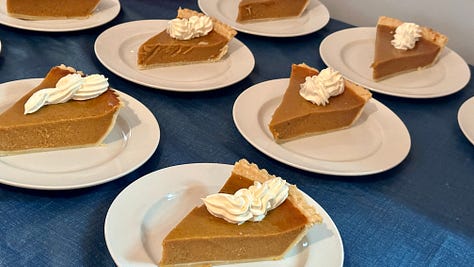
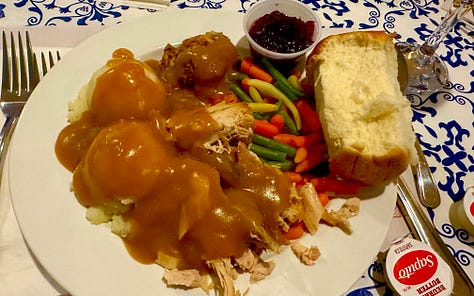
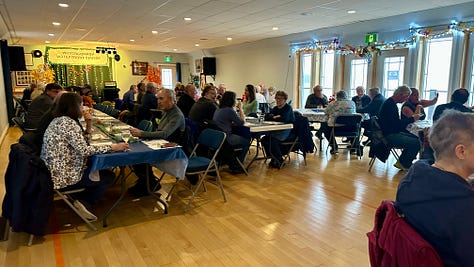
Breakfast and fiddle music at ‘Auld Farm’
We stayed on a farm run by a couple with deep Scottish connections and woke up to music in the living room. Auld Farm Inn Bed & Breakfast in the tiny but vibrant town of Baddeck features eight rooms, a greenhouse business, an extremely friendly dog called KC and two of the loveliest, most genuine hosts we’ve encountered, Jan and Glen Vickers.
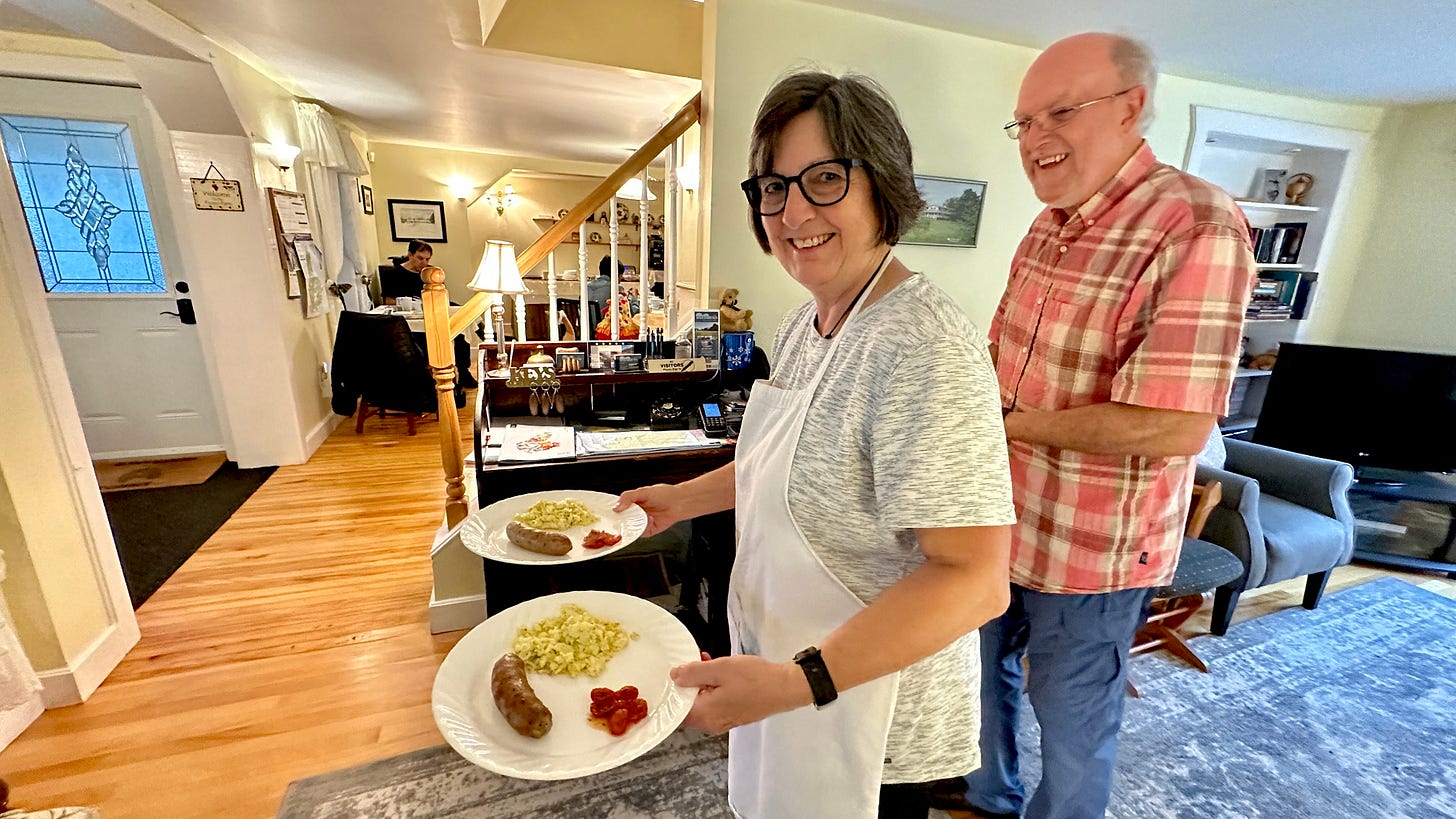
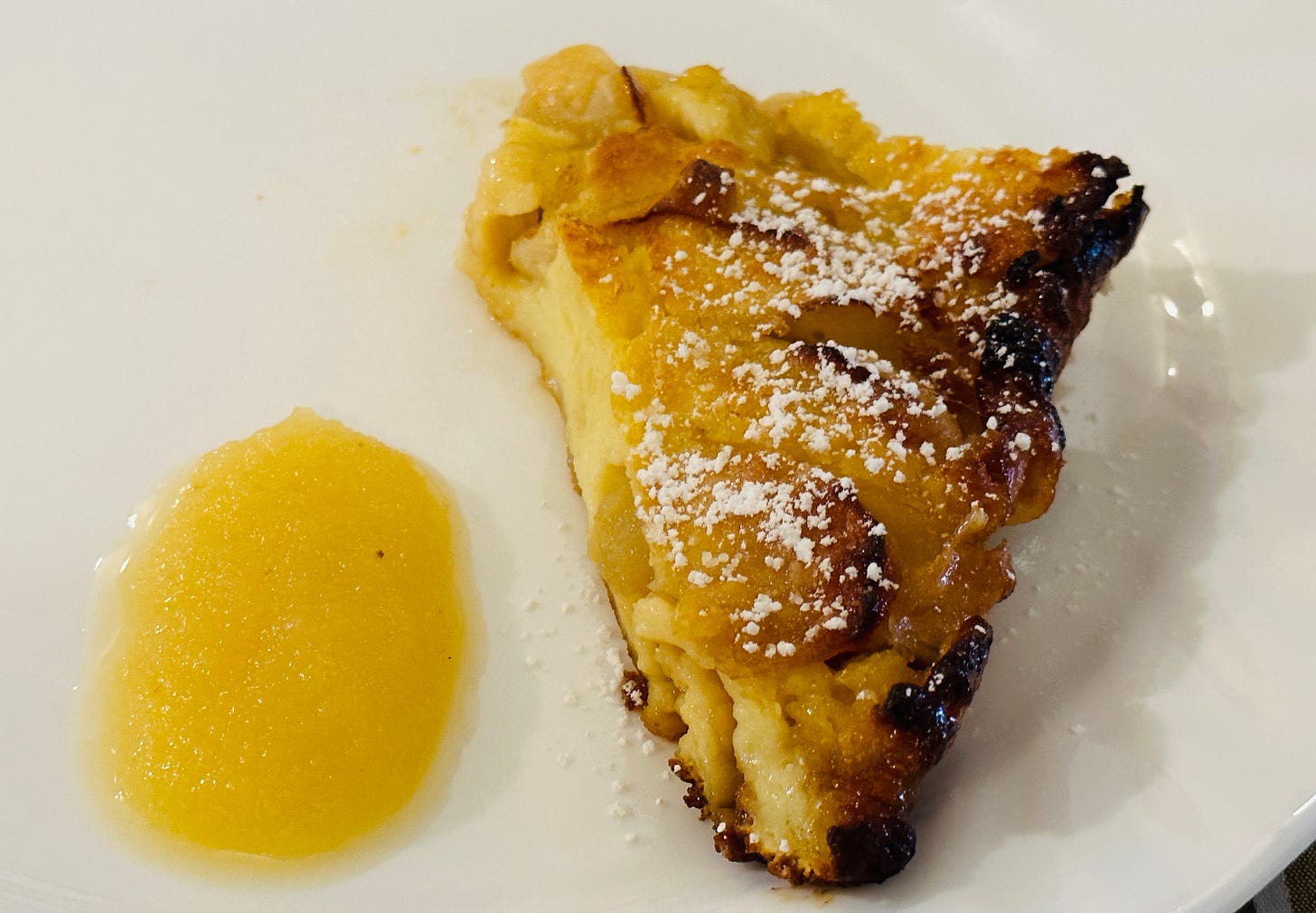
Jan and Glen were endlessly patient with our inquiries about the music, the area, the scenery, the food and the people—the feeling of being in a special, almost undiscovered place.
What makes Cape Breton different than other places, we wanted to know.
“It’s what Britain was like 25 or 30 years ago,” Jan told us. “It’s very community-oriented.”
Pausing to think a moment, she said, “Here, when people say ‘Have a nice day,” they mean it. That’s the difference.”
But the sparse population, the scarcity of certain conveniences we urban dwellers take for granted, does require a certain tolerance for driving long distances to buy necessities. Even with a local market, the Vickers said the demands of running their business (and serving great food!) require a weekly excursion of an hour each way to Sydney, Cape Breton’s largest urban center and historic capital, to pick up supplies. (Sadly, we never did get to visit Sydney!)
One of the perks of staying at the B&B was hearing Jan, a guitarist, and Dara Smith-MacDonald, a fiddle performer and teacher who was spending the night after jam sessions with other musicians lasting until 3 in the morning, gave an impromptu concert in the living room. Later Dara and her longtime musical partner, Adam Young, played at a local pub. Below, you can listen to a soulful rendition of “Ashokan Farewell,” a tune that was used in Ken Burns’ The Civil War miniseries on PBS, that Dara and Adam performed in August in Baddeck.
For more Celtic music, bagpipes, photo tips, and a complete rundown of our trip to Nova Scotia, check out Jeff’s PhotowalksTV video below:
Alexander Graham Bell in Nova Scotia
Baddeck itself has a great little museum celebrating the life and work of Alexander Graham Bell, the Scottish-born inventor of the telephone who built a home near the town in an area that reminded him of his native Edinburgh. The museum is filled not only with information about his most famous invention but his experiments with kites, planes, high-speed boats and speech transmission, and his close relationship with his wife Mabel, who lost her hearing to scarlet fever at age 5 and was Bell’s student before becoming his wife.
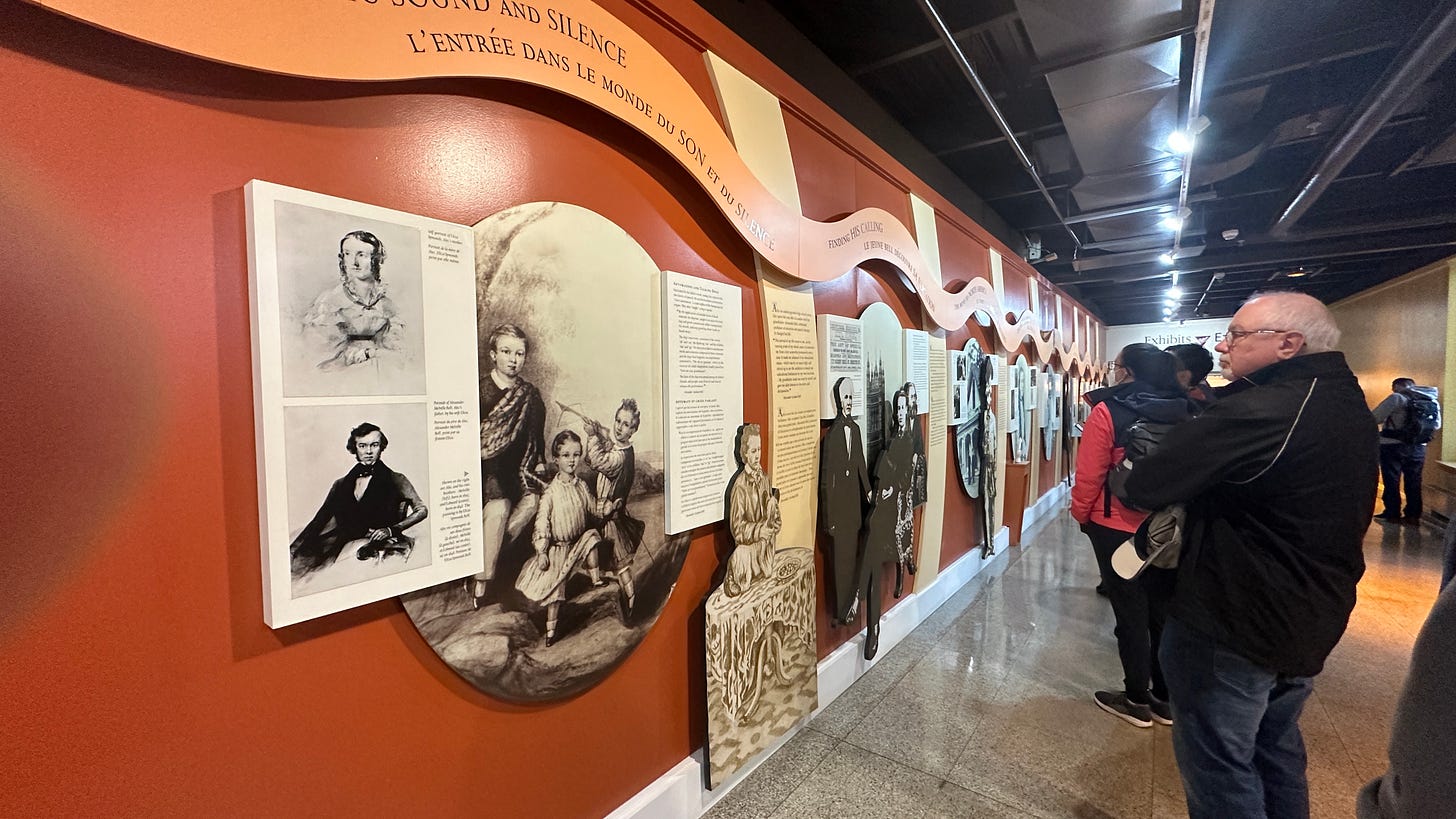
In town there are a number of restaurants, inns, gift shops and our favorite pastry and coffee destination, High Wheeler Cafe & Bakery. Like so many local businesses, it’s open from mid-May to mid-October. In my opinion, its oatcakes, a traditional Scottish treat, are worth coming back for any time.
And then there’s the renowned Cabot Trail, mentioned above, considered one of the most gorgeous drives in the world, with big sweeping views that go on for miles. Here’s a clip of a road trip shot some nine years ago (not by us!), but still as stunning, with a Celtic Colours soundtrack.
Top hats, groovy goats and glass blowers
If it’s gifts you’re after (and who comes home empty-handed after almost a month on the road?), there are unexpected delights along the Cabot Trail—and there’s often a story to go with them.
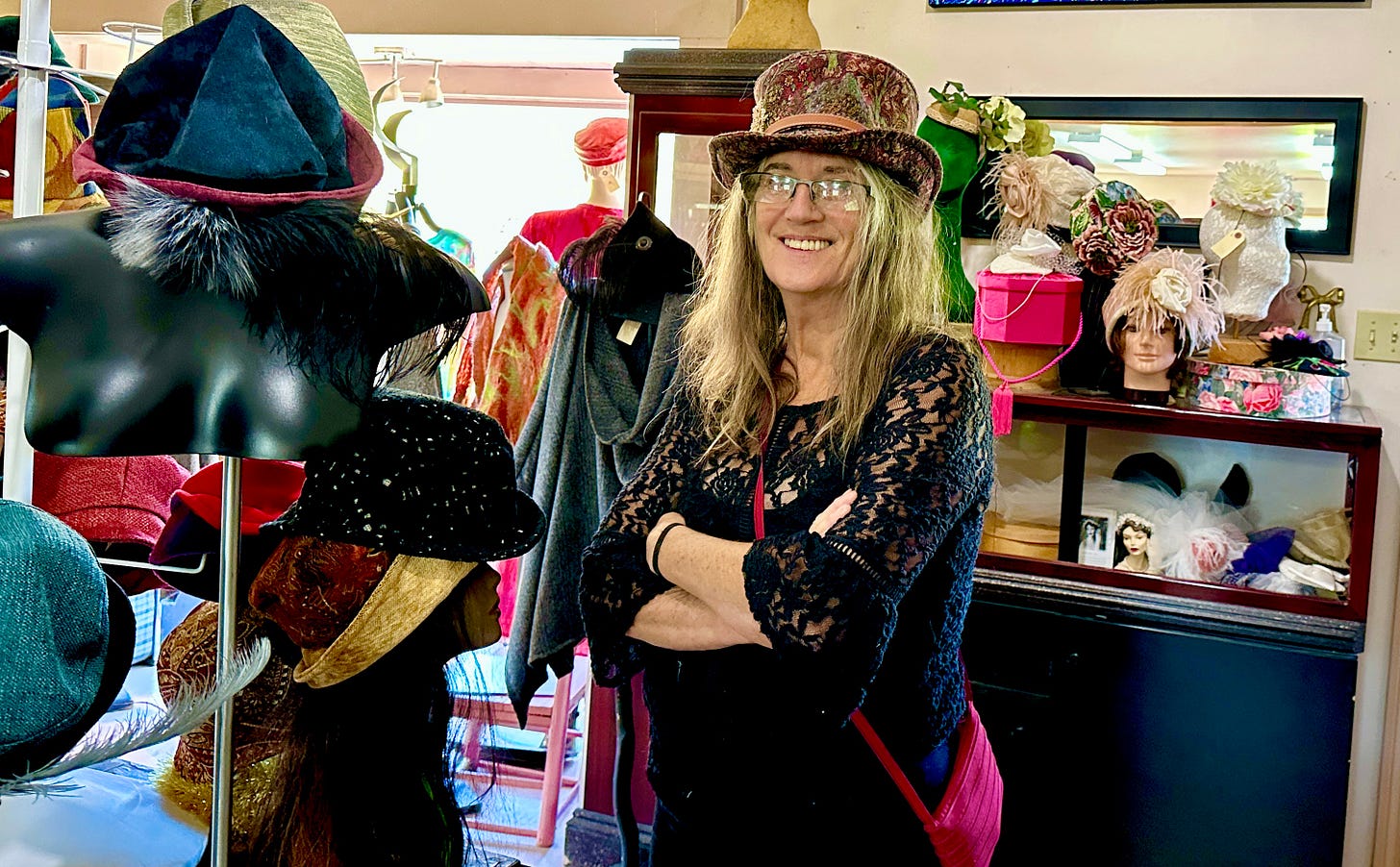
There’s Barbara Longva of Sew Inclined, whose wild assortment of fantastical headgear (and other hand-sewn creations) is a candy store for hat and accessory lovers. The moment I walked into the store, she took one look at me and said, “I’ve got just the hat for you!”
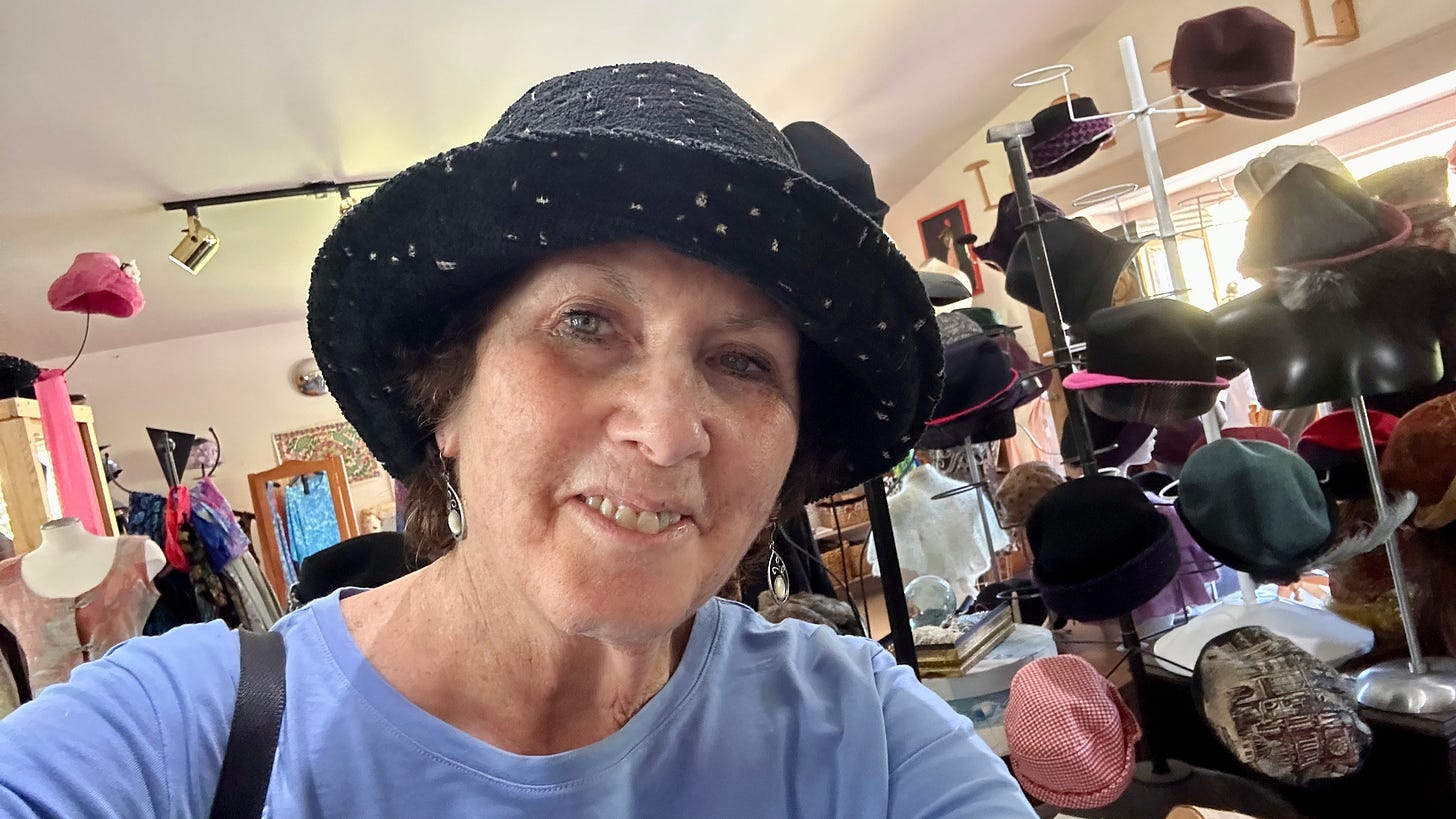
Barbara’s skills were nurtured by her mother, who taught her to sew at 5, leading to a lifelong passion and a business she says thrived, even during the pandemic. “People want something different that not everybody has,” she said.
On her wall is a note from Elton John thanking her for making him and his son Zachary matching top hats when the singer performed in Cape Breton in 2011.
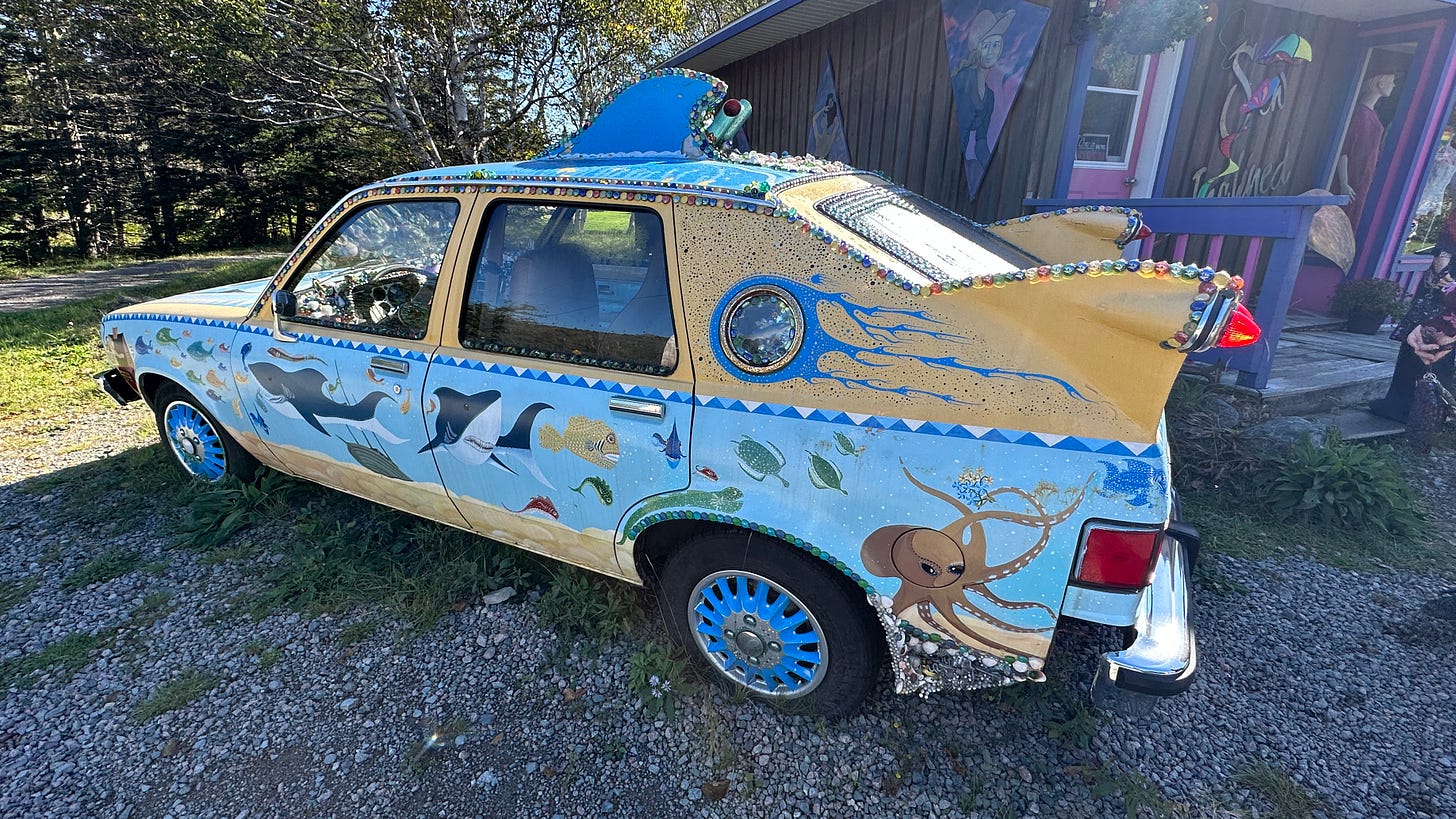
Nothing like portable gifts like goat soap, lotion or a bath balm. Even better if you can feed and pet the goats responsible for the product, then try some house-made gelato (tasty, though not containing any goat’s milk) afterwards. We found all that at the Groovy Goat Farm & Soap Company, which really did live up to its name.
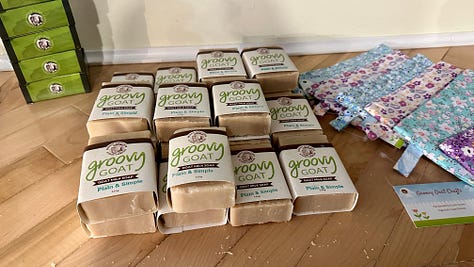
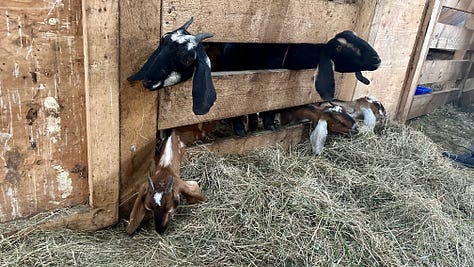
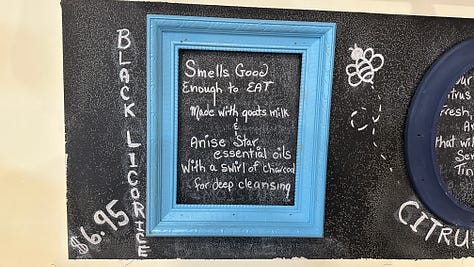
We also stopped off to watch a glass blower at work. I’m fascinated by the art and have seen it demonstrated several times yet never tire of watching the magic of molten pieces of glass being pounded, pushed, twisted and tortured into the shape of goblets, drink glasses and trinkets.
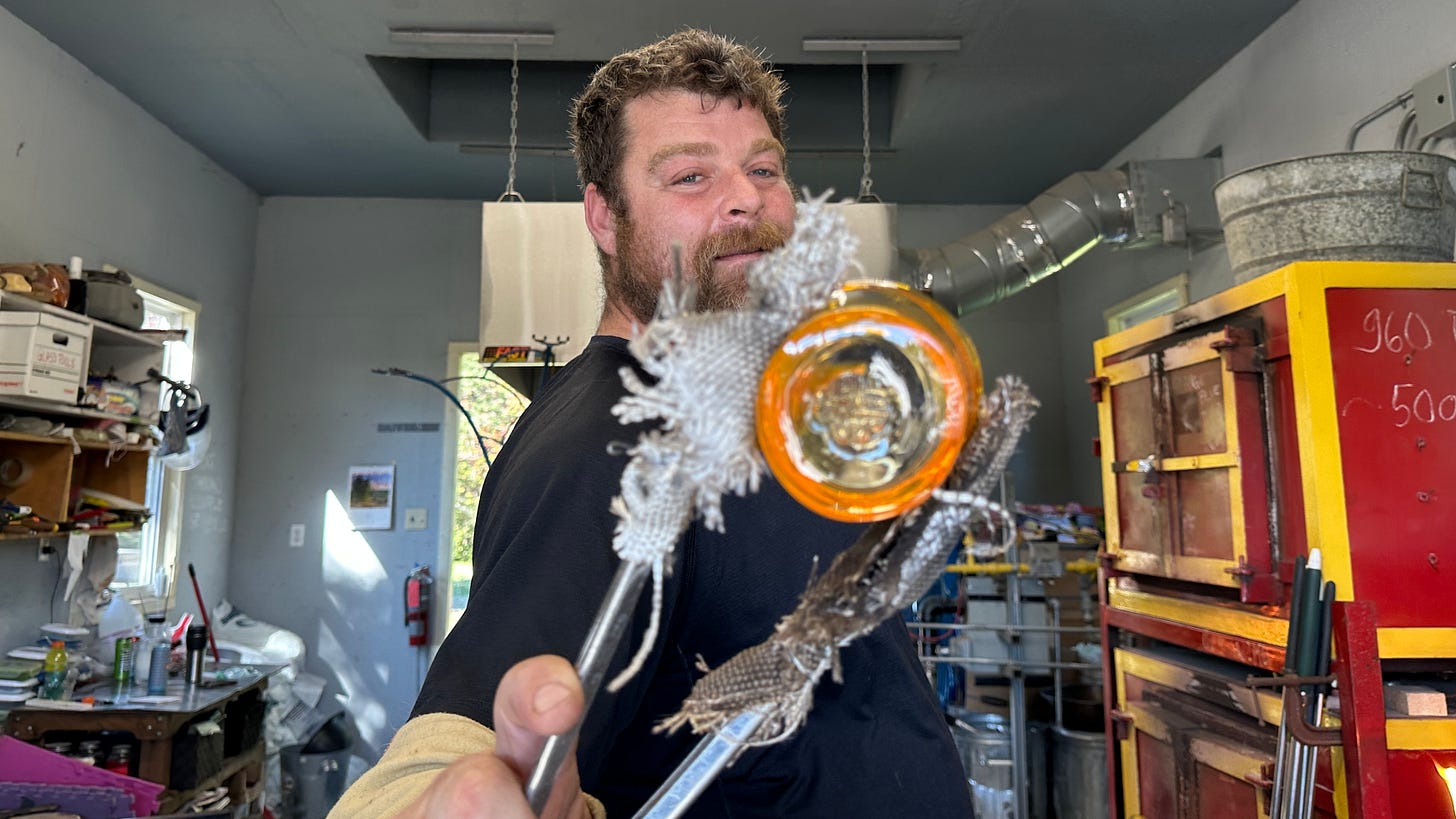
Nova Scotia smoked salmon—or is it lox?
So, of course it all comes back to food for me, so when we stayed at our second Cape Breton lodging, Castle Rock Country Inn, a beautiful little Georgian-style bed-and-breakfast with 18 rooms, glorious decor and sweeping views of the famous Middle Head Peninsula, I wanted to know more about the breakfast especially the smoked salmon. I talked to manager and co-owner, Kim Magistro not only about the fish, but also her own odyssey from Manhattan to a little boutique B&B along the coast of a sparsely populated island.
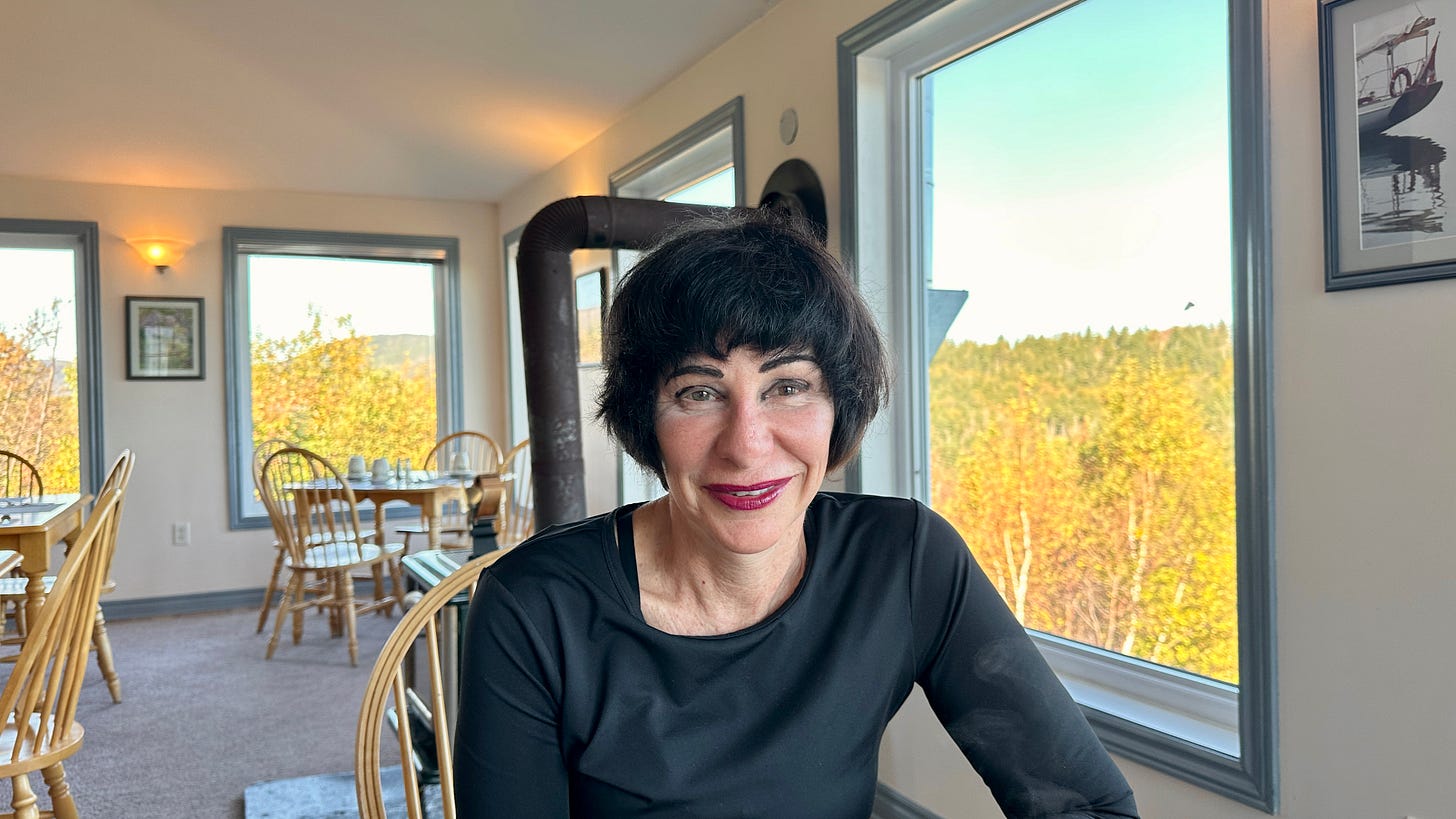
A native New Yorker who lived just a few blocks from Ground Zero on 9/11, Kim had been a restaurant manager in New York and had a culinary degree, along with an eclectic background that included stints as a magician’s assistant, puppeteer and writer. But food and hospitality were her true passions when she decided to trade Manhattan’s dense mass of humanity for the vast open vistas of the Cape Breton Highlands.
“One summer I came up here with my partner and we just fell in love with it,” she said. Her partner, a patent attorney, loved golf—and it turns out that Cape Breton, in the true Highland Scots tradition, is a golfing destination with several well-known courses. Kim was more taken with the great hiking opportunities along the Cabot Trail.
Although many of the businesses close in the off-season, Castle Rock is open year round, Kim said, catering to the corporate market and to a growing number of visitors to a local ski hill.
“Things are changing,” she said.
An upscale dinner menu touted as “Seafood Fusion with a Celtic Twist” and shaped by an assistant to well-known New York chef Irene Khin Wong is part of the mix. A creamy seafood chowder seeped in star anise is Kim’s contribution to the menu. Unfortunately we didn’t stick around long enough to order it for dinner, but Kim said she would send me the recipe. Stay tuned, you may just see it here at a future date.
But back to that smoked salmon. Was this the “Nova lox” that’s so pricy in L.A., I wondered. It was slightly smoky tasting, less salty than the variety I’m used too and delicious, but I wasn’t quite sure how to classify it. When I googled the difference between lox and Nova, I came across a description on bonappetit.com that made sense—sort of.
Nova is usually not only a species of fish but also a style of smoking, the online magazine site said. It’s supposed to be cold-smoked salmon from Nova Scotia—more specifically from Gaspé (but I looked that up and it said Gaspé was actually in Québec—go figure!). Lox, on the other hand, “traditionally refers to belly lox, which is salt-cured, but not smoked.”
Well they both taste awfully good on a bagel with a shmear of cream cheese, so I’m not going to quibble.
And the view from the inn was dreamy enough to make such small matters not matter at all.

And now, back to reality
So much has been happening on the global scene since we’ve been away—specifically the tragic events in Israel and Gaza and a continuing war in Ukraine. It feels like the world is coming apart, with no easy solutions to put it back together. My heart is filled with sorrow and my head with worry about the future. We’ve just enjoyed some of the most beautiful sights in nature and the company of new friends and beloved relatives, yet the world grows ever darker. I’ve often wondered how evil and misery can coexist with so much magnificence. It’s the ultimate irony.
My father, grandparents, aunts, uncle and other close relatives were driven from their longtime homeland in Germany before World War II because of ethnic hatred—specifically against Jews. And the specter of resurgent antisemitism, both here in the place where my relatives found a welcoming home, and elsewhere—especially in Israel where we have friends and family—fills me with dread. We must all stand up against the forces of senseless hatred and do what we can to support Israel and Ukraine. We must speak out without demonizing those who disagree with us and seek responsible sources of information rather than falling prey to the misinformation and disinformation that is flooding social media.
That’s all I want to say about it for now, but, again, we can’t put our heads down and pretend this will all just blow over. More than likely, it won’t. It never does.
As always, thanks for reading, liking, commenting, sharing and subscribing. See you next time.
Ruth
According to the Nova Scotia Museum: “Between 1773 and 1850, tens of thousands of Gaels (Gaelic speakers who came from the Highlands and Islands of Scotland) made the journey across the Atlantic Ocean to settle in Eastern Nova Scotia and Cape Breton. They tended to settle amongst their own kinship groups—people who came from a particular area of Scotland, sharing similar traditions, dialects and beliefs.”



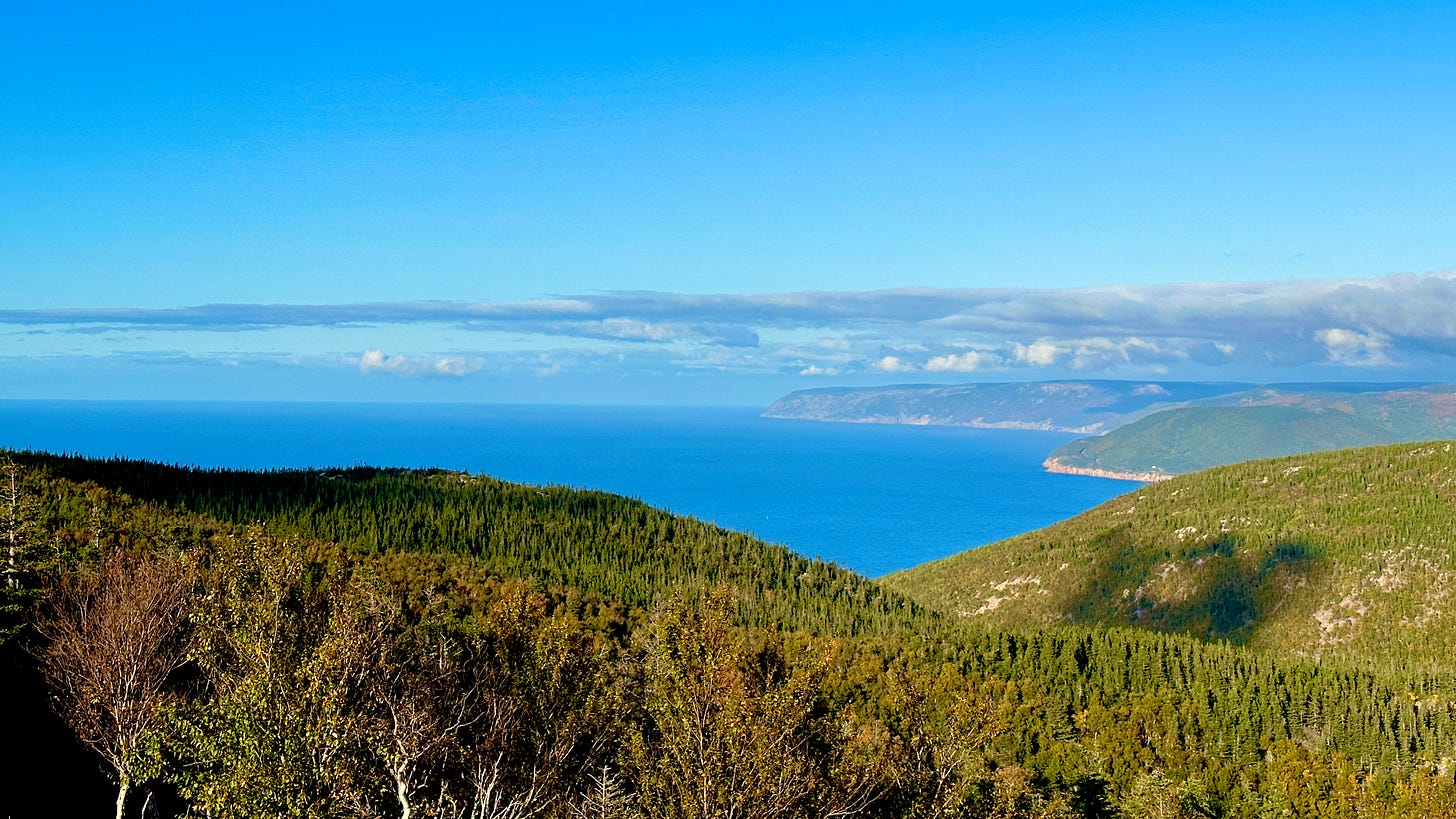

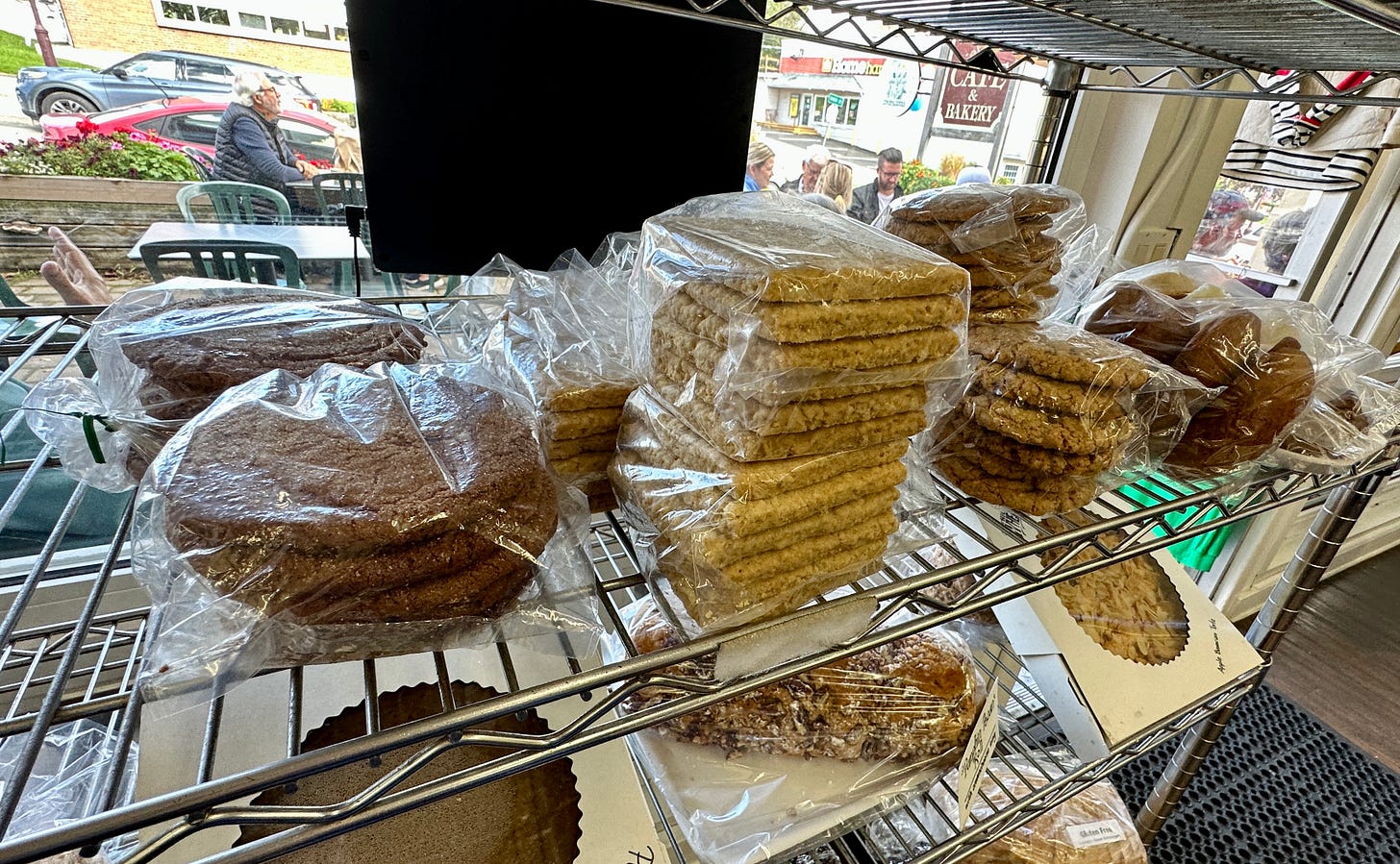
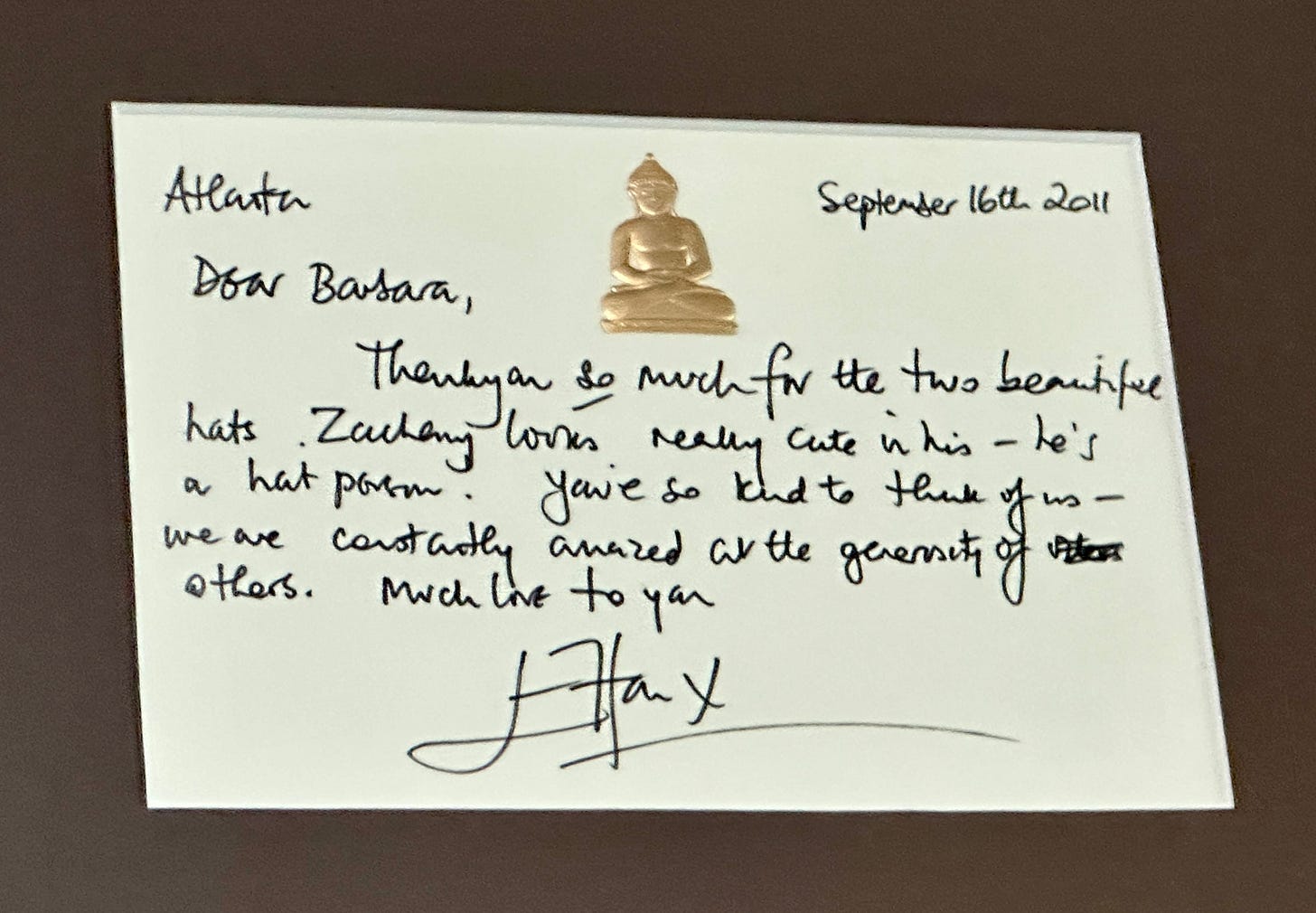
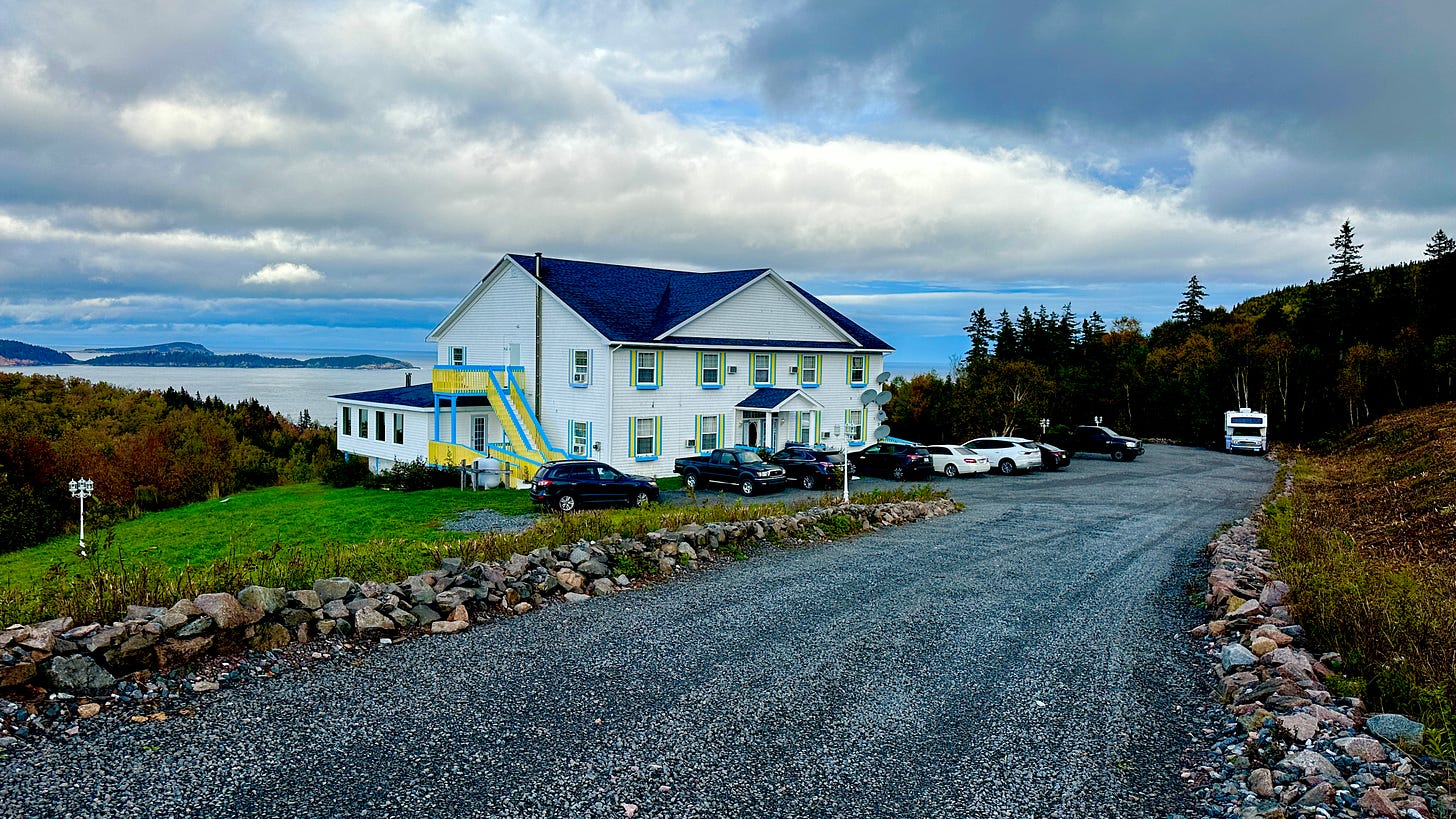
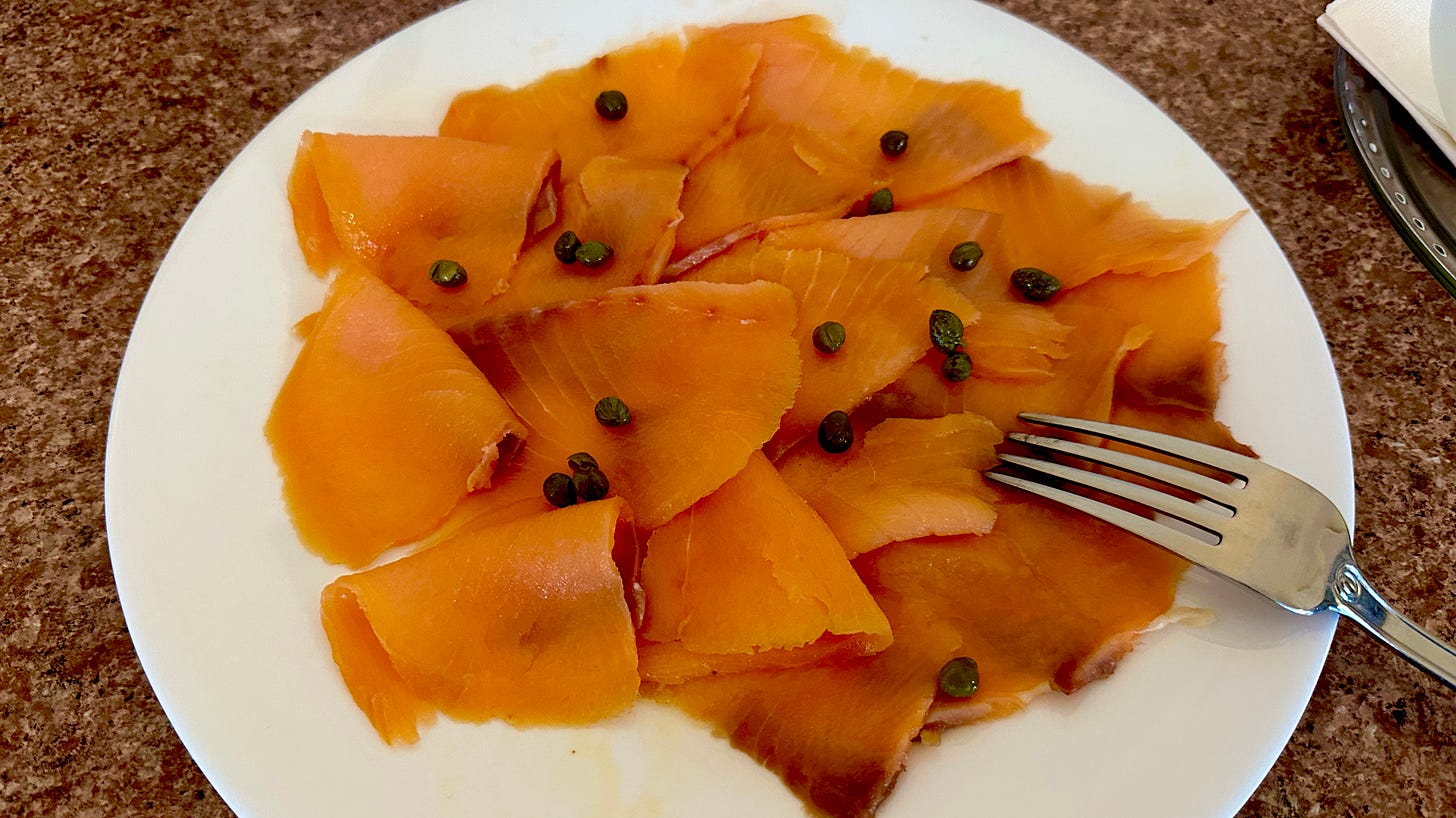
Not a fan of LOX, but I loved staying at the Castle Rock Country Inn--what a find, as was the Auld Farm B&B in Baddeck, our two best stays during the trip, along with the AirBNB in Peggy's Cove.
I just finished reading your fabulous post and I love being a voyeur on your trips. Everything sounds so fun. The ending was especially moving. So much beauty in the world, and so much misery. It's hard to grasp.